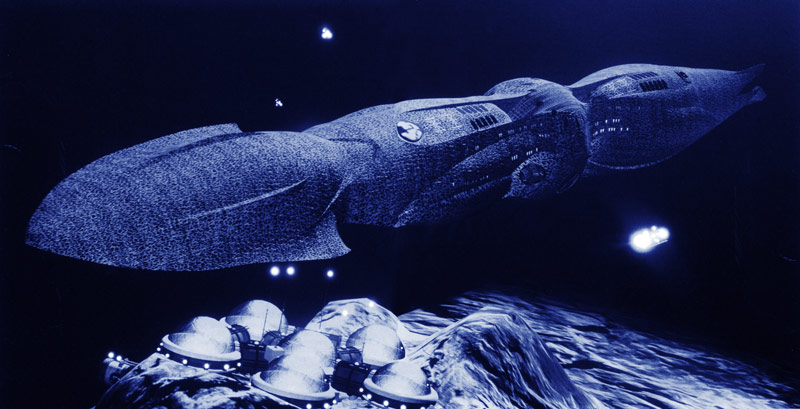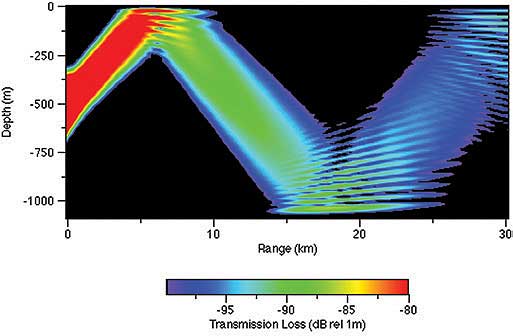Michael Shermer of Michael Shermer: What Will ET Look Like? has inspired me to write a sci fi. Shermer's ET, whether a bipedal primate or not, is attractive for a theme of oceans and humans -- both representing new experiences. An extraterrestrial, you might agree, is also ideal to ask questions to our hero, as suggested by me, to be played by Michael Shermer.

("seaQuest DSV" is a registered trademark of Universal Pictures and Amblin Entertainment. Photo courtesy of http://www.atlantisdsv.com {{promophoto}}) UEO seaQuest DSV 4600
he ship used, allegedly, a technique called "acoustic time reversal" for its underwater communication. This technique has been tested earlier at the Scripps Institution of Oceanography in La Jolla, California, USA and at other locations by other organizations.
What might be new in underwater communication beyond the present? The answer is given in Acoustic Vector Sensor to Improve Underwater Communication This new idea comes out of mathematics and today's powerful engineering techniques like the Monte Carlo and simulation computation, to say the least.[1]
Imagine multiple users and underwater vehicles and instruments to communicate information and data smaller, faster, and more reliably. Here is an "acoustic simulation in a simple ocean environment, depicting several of the features required in a Naval operational model: beam source, wind-driven sea surface losses on the first reflection, and loss-vs-angle ocean bottom treatment."[2]

Photo Credit: U.S. Navy
"Today existing receivers rely upon separated pressure-only sensors that are spaced far apart," informs the inventor Abdi. "Needless to say, array size can be a serious limitation in many situations, including the modern applications of small, autonomous and unmanned underwater vehicles. My new receiver would allow for a smaller, more nimble and easier-to-use product."[3]
[1] A. Abdi, H. Guo and P. Sutthiwan, “A new vector sensor receiver for underwater acoustic communication,” in Proc. MTS/IEEE Oceans, Vancouver , BC, Canada , 2007


